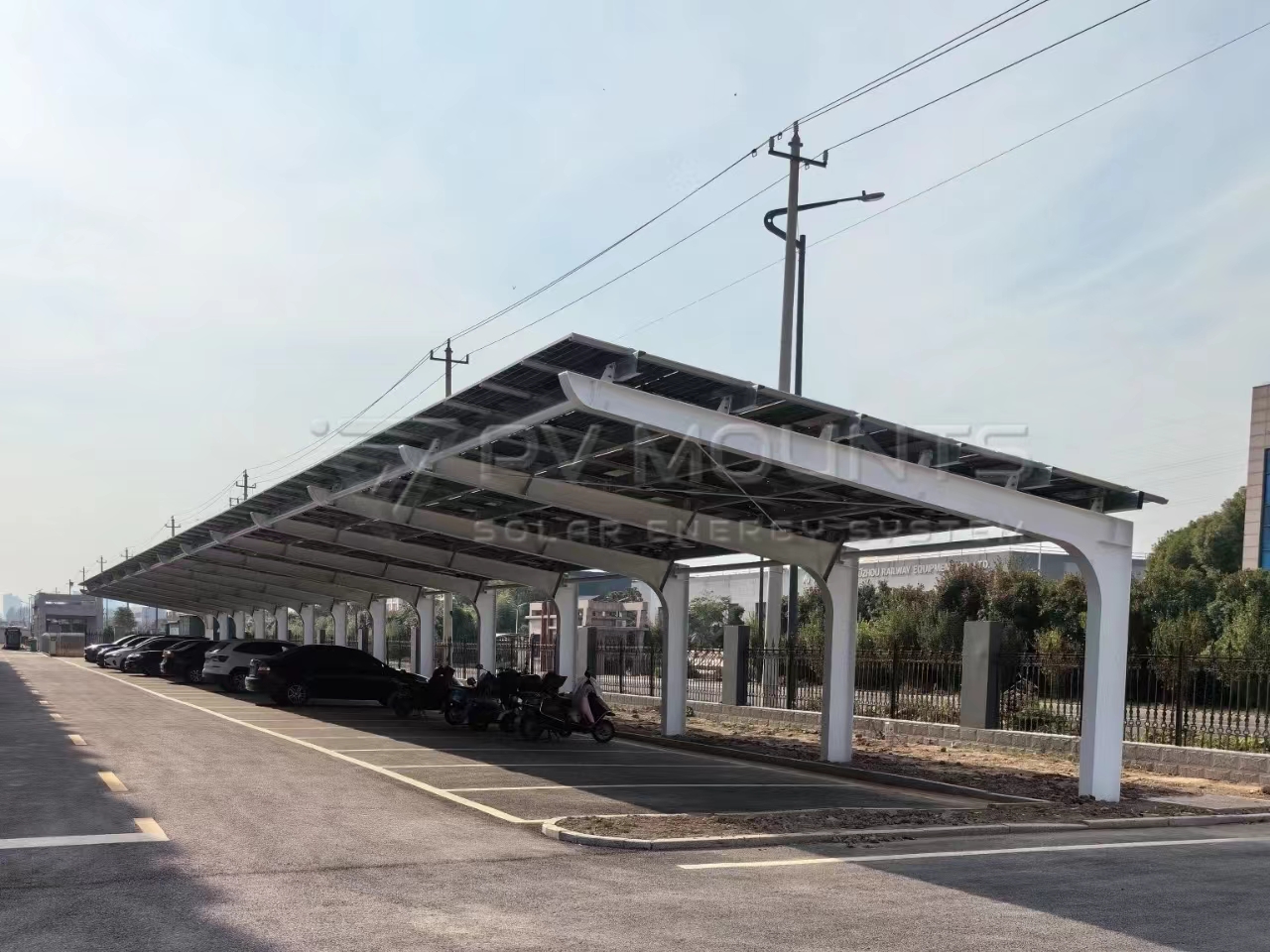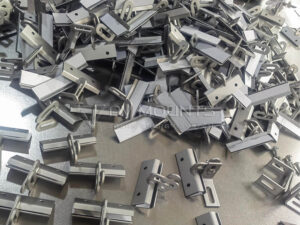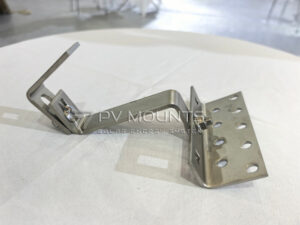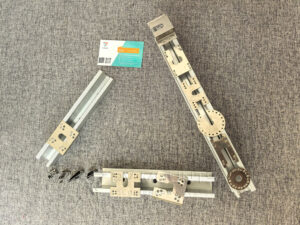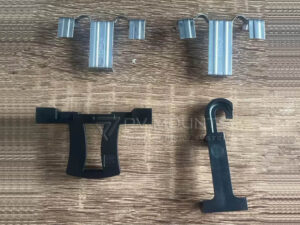Embarking on selecting a solar carport requires a fundamental understanding of its benefits, diverse types, and how it aligns with your personal or business needs. Solar carports stand out as a versatile solution, merging eco-friendliness with practicality. They’re more than just a power source; they represent a commitment to sustainable living and operational efficiency.
Table of Contents
1. Benefits of Solar Carports
Eco-Friendly Power Source
Solar carports harness the sun’s energy, providing a renewable and clean power source. This significantly reduces reliance on fossil fuels, contributing to a decrease in greenhouse gas emissions. By choosing a solar carport, you’re powering your home or business and taking a proactive step toward combating climate change.
Reduction in Electricity Bills
Solar carports offer a financial advantage by cutting down on your electricity bills. The energy generated can power your home or business operations, resulting in considerable savings over time. It’s an investment that pays for itself, providing economic benefits alongside environmental ones.
2. Types of Solar Carports
Residential Solar Carports
Designed to blend seamlessly with your home’s aesthetics, residential solar carports are functional and visually appealing. They can be customized to match your home’s design, making them valuable to any property.
Commercial Solar Carports
For businesses, commercial solar carports are a smart investment. They provide ample space for parking while generating significant energy to power business operations. These structures are ideal for companies looking to showcase their commitment to sustainability and reduce operational costs.
3. Fitting Solar Carports into Your Business
Assessing Space and Energy Needs
Before deciding on a solar carport, evaluate the space available and your energy requirements. This assessment will help you choose the correct size and type of carport, ensuring it meets your needs effectively.
Integration with Existing Infrastructure
Consider how a solar carport can integrate with your existing infrastructure. For homeowners, this might mean assessing roof space or garden layout. Businesses might need to consider their parking lot configuration and daily energy consumption patterns.
Long-term Investment
A solar carport is a long-term investment in your property. Its benefits extend beyond immediate energy savings, contributing to increased property value and positioning you as a leader in environmental responsibility, whether in a residential community or a business sector.
4. Materials and Durability for Solar Carports
When it comes to solar carports, the materials used in their construction play a pivotal role in determining their durability, maintenance requirements, and overall lifespan. Opting for high-quality materials might require a higher initial investment. Still, it’s a decision that can lead to greater durability and reduced maintenance over time, making it a crucial factor in your purchasing decision.
Key Materials Used in Solar Carports
Steel and Aluminum Frames
The structural frames of solar carports are typically made from steel or aluminum. Steel, known for its strength and durability, offers a robust foundation for the carport. It’s especially suitable for areas with harsh weather conditions. On the other hand, aluminum is lighter and corrosion-resistant, making it an excellent choice for coastal regions.
Solar Panel Quality
The solar panels themselves are the heart of the carport. Photovoltaic (PV) panels come in various types, such as monocrystalline, polycrystalline, and thin-film. Monocrystalline panels, though more expensive, are highly efficient and durable. Polycrystalline panels balance cost and efficiency, while thin-film panels are lightweight and flexible but less efficient.
Solar Panel Materials
As the roofing material of a solar carport, should be sturdy and weather-resistant. Options like polycarbonate panels are popular due to their durability, light transmission properties, and resistance to extreme weather conditions.
Considerations for Durability
Weather Resistance
The material should be capable of withstanding local weather conditions – be it heavy snow, intense heat, or high winds. This ensures the carport remains functional and safe throughout different seasons.
Maintenance Requirements
Different materials require varying levels of maintenance. For example, steel might need periodic treatments to prevent rust, while aluminum is more maintenance-free. The choice of material will influence the long-term upkeep costs and efforts.
Longevity
Quality materials might come at a higher cost but often translate into a longer lifespan for the carport. This long-term perspective is crucial, affecting the overall return on investment. A durable carport means fewer repairs and replacements down the line.
The Balance of Cost and Quality
While high-quality materials may increase the initial cost of a solar carport, they can provide significant savings in the long run. Reduced maintenance, higher efficiency, and longer lifespan mean a better return on investment. Therefore, when considering materials for your solar carport, you must balance your immediate budget with the long-term benefits of choosing durable, high-quality components.
5. Solar Panel Technology in Carports
In solar carports, staying abreast of the latest advancements in solar panel technology is crucial. These innovations enhance the efficiency of solar carports and ensure you get the best performance and value for your investment. Understanding these technological developments will guide you in choosing a solar carport that aligns with the highest efficiency and sustainability standards.
High-Efficiency Solar Panels
Recent advancements have led to the development of high-efficiency solar panels, which can convert more sunlight into electricity. This is particularly beneficial for solar carports, where space might be limited. Panels such as monocrystalline and PERC (Passivated Emitter and Rear Cell) have set new standards in efficiency.
Bifacial Solar Panels
Bifacial solar panels collect sunlight from both sides and are a groundbreaking innovation. They are especially suited for carports as they can harness reflected light from surfaces like concrete or white gravel underneath. This feature significantly boosts the energy output compared to traditional single-sided panels.
Integrated Energy Storage
Merging energy storage systems with solar carports marks a crucial development. With the addition of batteries, solar carports are capable of preserving the surplus energy they generate throughout the day. This stored energy can then be utilized during the night or on days with less sunlight, providing a reliable and continuous power supply.
Space Optimization
With the advent of high-efficiency panels, solar carports can generate more power in a smaller area. This is particularly advantageous in residential settings or small businesses with premium space.
Enhanced Aesthetics
Technological improvements have also led to sleeker, more aesthetically pleasing solar panels. This is important for solar carports, as they are often in visible locations. Panels now come in various colors and designs, allowing them to blend seamlessly with the architectural style of the surrounding structures.
Durability in Design
Modern solar panels are designed to be more durable and weather-resistant, crucial for carports exposed to the elements. Innovations in panel composition and framing mean they can withstand harsh weather conditions, from heavy snow to high winds, without compromising efficiency.
Maximizing Efficiency and Sustainability
Selecting a solar carport equipped with the latest solar panel technology is not just about energy efficiency but also sustainability. These advancements represent a stride towards more eco-friendly energy solutions, reducing carbon footprints and contributing to a greener future. Choosing a solar carport with state-of-the-art solar technology allows you to invest in a future where renewable energy is seamlessly integrated into our daily lives.
6. Cost Analysis and Budgeting for Solar Carports
Navigating the financial landscape of installing a solar carport is critical in the decision-making process. This involves thoroughly understanding the initial investment, the long-term savings it can bring, and the various financing options available. By delving into these aspects, you can develop a budget that aligns with your financial capabilities and goals.
Cost Factors
The upfront cost of a solar carport can vary widely based on several factors:
- Size and Capacity: Larger carports with higher energy output will cost more.
- Design Complexity: Custom designs or additional features like integrated storage systems add to the cost.
- Material Quality: High-grade materials and advanced solar panel technologies may increase prices.
Generally, installing a solar carport can range from a few thousand dollars for small, basic models to tens of thousands for larger, more sophisticated setups. It’s important to get quotes from multiple providers to understand the market rate and what’s included in the price.
Long-Term Savings
- Reduction in Utility Bills: One of the most significant financial benefits of a solar carport is the reduction in electricity bills. Over time, the energy generated by the carport can lead to substantial savings, offsetting the initial investment.
- Tax Incentives and Rebates: Many regions offer tax incentives, rebates, or grants for installing solar energy systems. These can significantly reduce the net cost of your solar carport, making it an even more attractive investment.
- Increased Property Value: Installing a solar carport can increase the value of your property. Homes and commercial properties with solar installations often sell at a premium, partly because they offer lower energy costs.
7. Installation Process and Timeframe for Solar Carports
The installation process of a solar carport can vary from being relatively simple to quite complex, influenced by factors such as the size of the project, specific needs of the site, and the complexity of the design. Understanding what to expect during the installation can help you prepare adequately and choose the right installer. Let’s delve into the installation process’s key stages and the typical completion timeframe.
Key Stages of Solar Carport Installation
- Initial Inspection: An expert will visit your location to evaluate the installation site. This includes checking the ground conditions, available space, sun exposure, and potential obstructions.
- Energy Needs Analysis: The installer will assess your energy requirements to determine the size and capacity of the solar carport needed.
- Custom Design: Based on the site assessment, a solar carport design that fits your space and meets your energy needs is developed.
- Permitting: The installer will usually handle obtaining necessary permits from local authorities, ensuring the project complies with local codes and regulations.
- Foundation Work: This involves preparing the ground and laying foundations, which is crucial for the stability of the carport.
- Structural Assembly: The frame of the carport is erected, followed by the installation of the solar panels and electrical systems.
- Electrical Integration: Connecting the solar carport to your property’s electrical grid may include integrating storage batteries if opted for.
- Quality Checks: A thorough inspection ensures everything is installed correctly and safely.
- Commissioning: The system is activated, and final adjustments are made to ensure optimal performance.
8. Solar Carport Maintenance and Care
Proper maintenance is essential for maximizing the lifespan and efficiency of your solar carport. Regular care ensures that it continues operating optimally and prevents potential issues that could arise from neglect. Let’s review some essential tips for routine maintenance and handling weather and environmental factors.
Regular Cleaning
- Panel Cleaning: Solar panels should be cleaned regularly to remove dust, dirt, and bird droppings, which can reduce their efficiency. A simple hose down or using a soft cloth or sponge with mild detergent is usually sufficient.
- Structural Check: Periodically inspect the carport’s structure for any signs of wear and tear, such as rust on metal parts or cracks in the foundation.
Electrical System Checks
- Inspection of Wiring: Ensure that all wiring and connections are intact and free from damage. Look out for any signs of wear, corrosion, or animal damage.
- Inverter Maintenance: The inverter, which converts solar energy into usable electricity, should be checked to ensure it’s functioning correctly. This may require a professional inspection.
Monitoring Performance
- Energy Output Tracking: Keep an eye on the energy output of your solar carport. A sudden drop in performance could indicate an issue that needs attention.
- Usage Patterns: Understanding your energy usage patterns can help you identify any inconsistencies or inefficiencies in the system.
Weatherproofing
- Wind and Storm Protection: Ensure the carport is built to withstand local wind speeds and storms. Additional anchoring or reinforcement might be necessary in areas prone to high winds or hurricanes.
- Snow and Ice: In regions with heavy snowfall, the structural integrity should be robust enough to bear the weight of the snow. Panels usually shed snow easily but may sometimes require manual clearing.
Dealing with Extreme Temperatures
- Heat Tolerance: Solar panels perform well in heat but check for overheating issues, especially in extremely hot climates.
- Cold Weather Operation: Solar panels are generally efficient in cold temperatures, but wiring and batteries should be insulated against freezing conditions.
Environmental Considerations
- Tree Trimming: Keep nearby trees trimmed to prevent shading on the panels and reduce the risk of damage from falling branches.
- Wildlife Measures: In some areas, protecting the carport from wildlife interference might be necessary, such as bird-proofing or rodent guards for wiring.
Ultimately, whether a solar carport is right for you hinges on how well it aligns with your environmental goals, financial capacity, and property characteristics. If you are finding a sustainable, cost-effective energy solution and your property is conducive to a solar installation, a solar carport can be a valuable addition to your home or business. It’s a proactive step towards a greener future, offering immediate and long-term benefits.
Solar carports are more than just an energy solution; they are a commitment to sustainability and innovation. By carefully considering the advantages and your specific circumstances, you can decide if a solar carport is the right choice, contributing positively to the environment while take the benefits of renewable energy.


